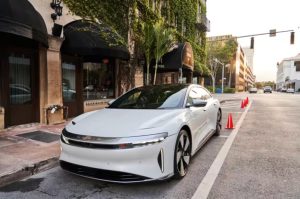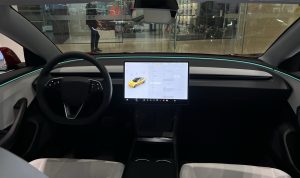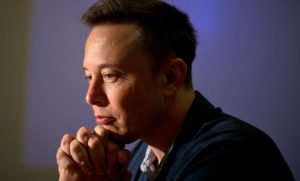Another Tesla Executive Departs: One of the Earliest Engineers
7 min read
\Within half a month, two executives have left
Tesla has experienced another executive departure.
This time, it’s Colin Campbell, Vice President of Powertrain Engineering.
He recently announced on LinkedIn that he is leaving Tesla to join a startup called Redwood Materials as Chief Technology Officer.
Prior to this, Colin had been with Tesla for 17 years, making him the second executive to leave within half a month following the departure of Tesla’s CFO, Zachary Kirkhorn.
In June of this year, Mustapha El Akkari, the executive responsible for raw material procurement for Tesla’s Cybertruck electric pickup, also resigned. He subsequently joined Tesla’s competitor, Rivian, as Senior Director of Structural and Material Engineering, responsible for Rivian’s raw material procurement.
Tesla’s top leadership has been undergoing ongoing changes.
01 One of Tesla’s Earliest Engineers
Colin spent a total of 17 years at Tesla, making him a true veteran of the company.
When Colin joined Tesla, the company hadn’t even produced a car yet. He joined Tesla in August 2006 as an inverter engineer and was one of the earliest engineers at Tesla.

Source: LinkedIn
At that time, Tesla was just a small startup planning to launch the Roadster. As Tesla grew from a startup to one of the largest companies in the world, Colin also saw his career rise within Tesla.
From August 2006 to January 2014, over the course of seven and a half years, Colin held the position of Tesla Traction Inverter Electrical Engineer. This was his first role at Tesla and the one he held for the longest duration before being promoted to Engineering Manager.
After 10 years with Tesla, in 2016, Colin became the Senior Engineering Director of Power Electronics at Tesla. He quickly rose through the ranks, becoming the Senior Director of Powertrain, responsible for overseeing the development of all powertrain components, including high-power electronics, electric motors, transmissions, battery packs, and charging systems, encompassing electrical, mechanical, and manufacturing engineering.
In June 2021, Colin was promoted to Vice President of Powertrain Engineering at Tesla, a position he held until his departure this month.
Colin’s significance to Tesla is undeniable. He led the team that developed Tesla’s powertrain systems from the ground up, with core technologies being internally developed, including battery cell technology, battery management systems (BMS), electric motors, and power electronics. These technologies have set industry benchmarks.
In March of this year, Colin appeared at a Tesla Investor Day, where, as the Vice President of Powertrain Engineering, he revealed that Tesla’s next-generation permanent magnet electric motor would not rely on any rare-earth metals.

Source: Tesla
It was this statement that caused a steep drop in global rare earth material stocks. The stock price of MP Materials, the largest rare earth materials producer in the United States, fell 3.2% in after-hours trading on the same day.
Colin did not disclose the specific reason for his departure, and neither Elon Musk nor Tesla has responded to his departure. However, Colin’s “farewell announcement” suggests an amicable departure.
On his LinkedIn post, he described his time at Tesla as “an incredible journey.” He stated, “As an engineer, I can’t summarize how many meaningful technical challenges I’ve had the opportunity to tackle while making exciting, safe, reliable, and increasingly affordable electric vehicles. With Tesla’s success, we’ve not only changed global emissions but forever altered the world’s perspective on transportation and helped shape the product roadmaps of nearly every other carmaker. It’s more than I ever dreamed.”
Colin also praised Tesla, Elon Musk, and his colleagues, describing them as talented, passionate, determined, friendly, and dedicated.
As Colin departs Tesla, he has also announced his next destination: Redwood Materials, a startup focused on battery recycling. In his new role, he will serve as the Chief Technology Officer.

Source: Redwood
This battery recycling startup, while not as well-known as Tesla, has intricate ties with the electric car giant.
Headquartered in Carson City, Nevada, Redwood Materials was founded in 2017 by J.B. Straubel, co-founder of Tesla and former Chief Technology Officer of the company at that time.

Source: Redwood
Until 2019, Straubel remained a member of Tesla’s technical committee. It was also in that year that he left Tesla to focus on the development of Redwood.
Redwood’s goal is to create a complete closed-loop battery supply chain, where materials used in battery production are recycled and used again for new battery manufacturing. However, their even broader aim is to attempt to create a North American battery supply chain by producing and recycling cathode and anode materials.

Source: Redwood
Redwood converts discarded electric vehicle batteries and waste from car factories into raw materials and components to manufacture new batteries, incorporating “sustainably sourced materials” into their manufacturing process.
Since its inception, Redwood has received support from major investors including asset management companies T Rowe Price, Baillie Gifford, and Fidelity. According to insiders, several existing investors of the company will also participate in new fundraising activities.
In 2021, Redwood raised over $700 million at a valuation of $3.7 billion and earlier this year secured a conditional commitment for a $2 billion loan from the U.S. Department of Energy.
Besides having strong ties to Tesla through its founders, many employees at Redwood, including individuals like Colin, have also come from Tesla.
Another executive at Redwood, Chief Operating Officer Kevin Kassekert, formerly served as Vice President of Human Resources and Recruiting at Tesla. According to LinkedIn data, there are currently over 120 people at Redwood who have previously worked at Tesla.

Source: Redwood
Interestingly, in May of this year, J.B. Straubel was elected to the Tesla board of directors as an independent director at Tesla’s shareholder meeting. This means that J.B. Straubel has returned to Tesla in a different capacity.
Clearly, the relationship between Redwood and Tesla is quite significant. It was announced last year that Redwood’s Battery Materials Campus 1 facility in northern Nevada will provide recycled battery materials to Tesla’s Gigafactory Nevada.
There are speculations that Tesla might potentially acquire Redwood in the future to enhance the North American battery supply chain market.
So, what can Colin do at Redwood?
Colin stated that at Redwood, he will continue to focus on electrification “but this time, by addressing upstream challenges to ensure the broad adoption of electric vehicles and clean energy.”
“I’m humbled and excited to join, learn, lead, and grow a team that’s accomplished so much already, even in its early stages! This team is innovating in the fields of chemistry, mechanics, electrical, and systems engineering,” Colin wrote on LinkedIn, expressing his excitement about Redwood’s future.
As long as Musk is around…
Before Colin’s departure, earlier this month, Tesla experienced a significant personnel change as its Chief Financial Officer, Zach Kirkhorn, left the company. He was succeeded by Chief Accounting Officer Vaibhav Taneja.
It’s worth noting that Kirkhorn was one of Tesla’s four top executives and was considered a potential successor to Musk.

Source: Tesla
Within half a month, two executives leaving one after another raises suspicions about what might be happening within Tesla. While their departures seem amicable, it still leaves people wondering. Some speculate that they might have made work-related mistakes and were let go.
However, this seems unlikely. Take CFO Zach Kirkhorn, for instance. During his 13 years of service at Tesla, before becoming CFO, the company was burning through over a billion dollars in a single quarter and was consistently in a state of loss.
But under his leadership as CFO, Tesla turned profitable, paid off around $10 billion in debt over the past three years, achieved investment-grade ratings, and even joined the S&P 500 index in December 2020.
When he began as CFO, Tesla’s market value was around $50 billion, and now it has surpassed $700 billion.

Source: Tesla
During Kirkhorn’s tenure as CFO, Tesla not only achieved 15 consecutive quarters of profitability but also accumulated a reserve of $22 billion. The ratio of Tesla’s sales and general administrative expenses to revenue (a measure of efficiency) also dropped from around 13% in 2018 to about 5% last year.
As for Colin, he was equally accomplished. As one of Tesla’s earliest engineers, his professional capabilities were beyond doubt.
From this perspective, it might be a matter of differing perspectives.
Numerous media reports suggest that Musk often fires executives at the drop of a hat. A former Tesla employee once revealed that Musk’s management style towards subordinates is extremely demanding, even towards “veterans” who have made significant contributions to the company.
In fact, as the fastest-growing carmaker globally, Tesla has experienced frequent high-level departures over the years, ranging from senior technical personnel to Musk’s personal assistants, and even to regular employees. The company has undergone substantial iterations.
However, there’s been one constant figure at Tesla, and that’s Musk.
Former CFO Ryan Popple stated that Tesla’s remarkable development is largely attributed to Musk’s unwavering pursuit of perfection, which compels people to address all technical challenges. Nevertheless, he also acknowledged that this attitude could make employees’ work and lives difficult.
But all of this is speculation. Whether it’s Colin or Kirkhorn, both expressed gratitude towards Tesla and Musk upon their departures, highlighting a unique chapter they experienced at the company.
Nevertheless, for Tesla, frequent executive turnover necessitates prompt adjustments; a high-growth company requires a stable management layer.
Of course, for Tesla, as long as Musk is present, many issues may not pose significant challenges.



